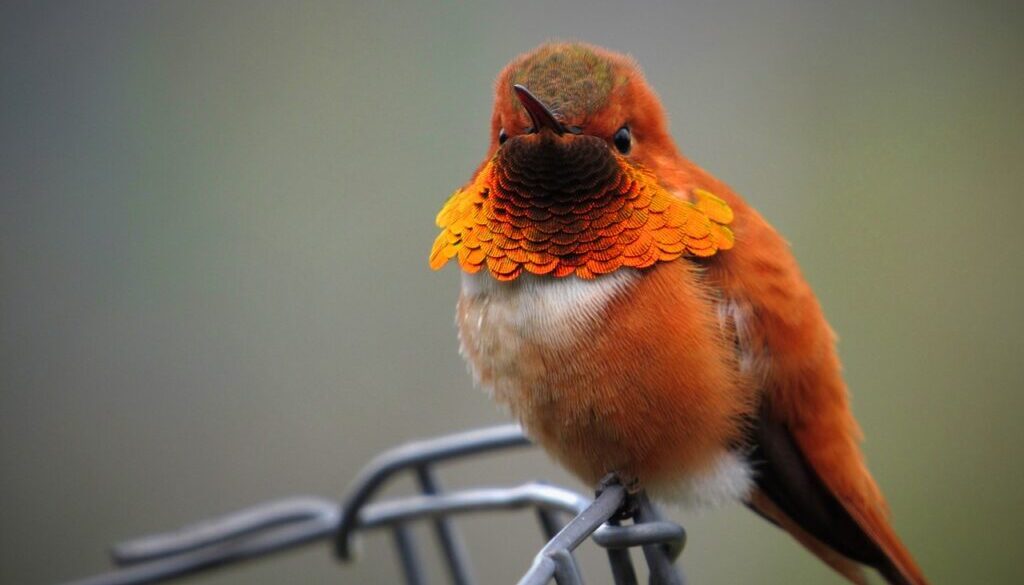Amid steep global bird declines, farmers create refuges
New research finds that certain farming practices are benefiting some types of birds, underscoring the influence agriculture can have on important species at a time when bird populations around the world are in decline.
Farms that make use of smaller plots, varied crops, and tracts of forest, are helping boost bird populations in Costa Rica, scientists wrote in a paper published Monday in the Proceedings of the National Academy of Sciences. The findings add to previous evidence that diversified farming is an important conservation tool, said co-author and Stanford University researcher Nicholas Hendershot.
“There is a really huge benefit for biodiversity from these diversified farming practices,” he said.
Hendershot and his colleagues determined that over 18 years, bird species living on diversified Costa Rica farms were more likely than those in forests to have increasing, rather than decreasing populations. The varied crops and natural features on diversified farms provide a home for the birds and for insects and other animals that birds eat, said Hendershot.
On intensified farms, which generally plant only one crop and make use of high amounts of pesticides, the only species of birds thriving long-term were those that were adapted to highly-degraded landscapes, indicating the importance of diversified farms to provide habitat for other bird species, he said.
The research also “confirms what Indigenous communities around the world have already known for a long time, which is that humans can and should have reciprocal relationships with the rest of the local ecological community they are part of,” said Tadashi Fukami, an author on the paper and a professor of biology at Stanford University.
A biodiversity crisis
Moving farming practices away from intensive methods (such as high pesticide use and large swaths of land planted with just one crop) may be necessary to stem the loss of biodiversity on Earth — for birds and other species, too. Since 1970, the world has lost 3 billion birds, almost 30% of the global bird population, according to one 2019 paper. Seventy other bird species are at a tipping point, and are on track to lose half their populations in the next 50 years, according to the North American Bird Conservation Initiative. Birds in every habitat except wetlands are declining in the US.
Converting land for agricultural uses is one of the biggest drivers of the biodiversity crisis, according to the United Nations. Climate change, as well, is a leading cause of biodiversity decline.
Birds are especially important as they tend to indicate the health of a whole ecosystem, said Hendershot, making them a good proxy for understanding human impacts on ecosystems. Birds also contribute to food security and ecosystem health by pollinating crops and devouring crop pests. “We’re so dependent upon birds and the services they provide for us,” he said.
While the new research showed encouraging news for birds living on diversified farms, it was a “sad story” for tropical forest birds, said Hendershot. That’s partly because some tropical forest birds are highly specialized, and adapted to live only within forests. Once those forests are cut down to make way for agriculture, the birds can’t adjust to the new landscape. “Once they’re gone from these landscapes, they could be gone forever,” he said.
Bird-friendly farms
While protecting species’ habitats from human activity should always be a priority, promoting biodiversity within human-altered landscapes, such as farms, is necessary, too, said Hendershot. “How we manage farmlands outside of the forest is really important for protecting biodiversity,” he said. “It’s not a replacement for forest conservation, but it’s a tool that can be used in addition.”
Employing diversified farming for conservation in the US may be more difficult than in Costa Rica because most of the acres farmed in the US are used for intensive, single-crop operations that don’t leave much room for wild animal habitat. Intensive farming also requires more pesticide use, which further threatens biodiversity.
“The more intensive your farming practices are, the worse they are for biodiversity, kind of no matter where you are,” said Hendershot.
In the US, some farmers do take bird conservation into consideration. For example, California incentivizes farmers in its Central Valley to flood their crop fields, providing habitat for migrating shorebirds, and the US Department of Agriculture’s Natural Resources Conservation Service provides farmers incentives to create habitat for grassland birds.
The National Audubon Society, a bird conservation nonprofit, offers a “Bird-Friendly Land” certification for beef produced on grazing land with native grasses and protected waterways.
Chris Wilson, director of Audubon’s Conservation Ranching program, said any type of farming that leaves residual vegetation on the landscape can help support bird populations. Farming practices that do this include restoring native grasses on grazing land, keeping cattle off of riverbanks and wetlands, and moving away from continuous grazing of cattle and towards rotational grazing, which creates a “mosaic of habitat” for birds. Eliminating chemicals is also a priority, since fewer pesticides allows insects, which birds eat, to thrive.
“We know habitat works, and that it absolutely makes a difference on a local level,” said Wilson. “The challenge is getting enough ranchers and landowners to incorporate these types of practices over time and scale.” He said that while bird conservation practices are still uncommon in the US, “there is a growing awareness that a lot of these practices are not only good for birds and wildlife, but that they also increase a rancher’s productivity and land resilience to things like drought.”
Hendershot said even small-scale changes — such as planting a variety of flowers and trees in one’s yard — can have an impact for wildlife.
“You can essentially create a small little diversified farm that can support species that don’t just live in grassy lawns,” he said.
(Featured image: A Rufous hummingbird — a species expected to lose half or more of its population in the next 50 years — sits on a fence. Credit: Daniel Roberts)
 EWG
EWG


